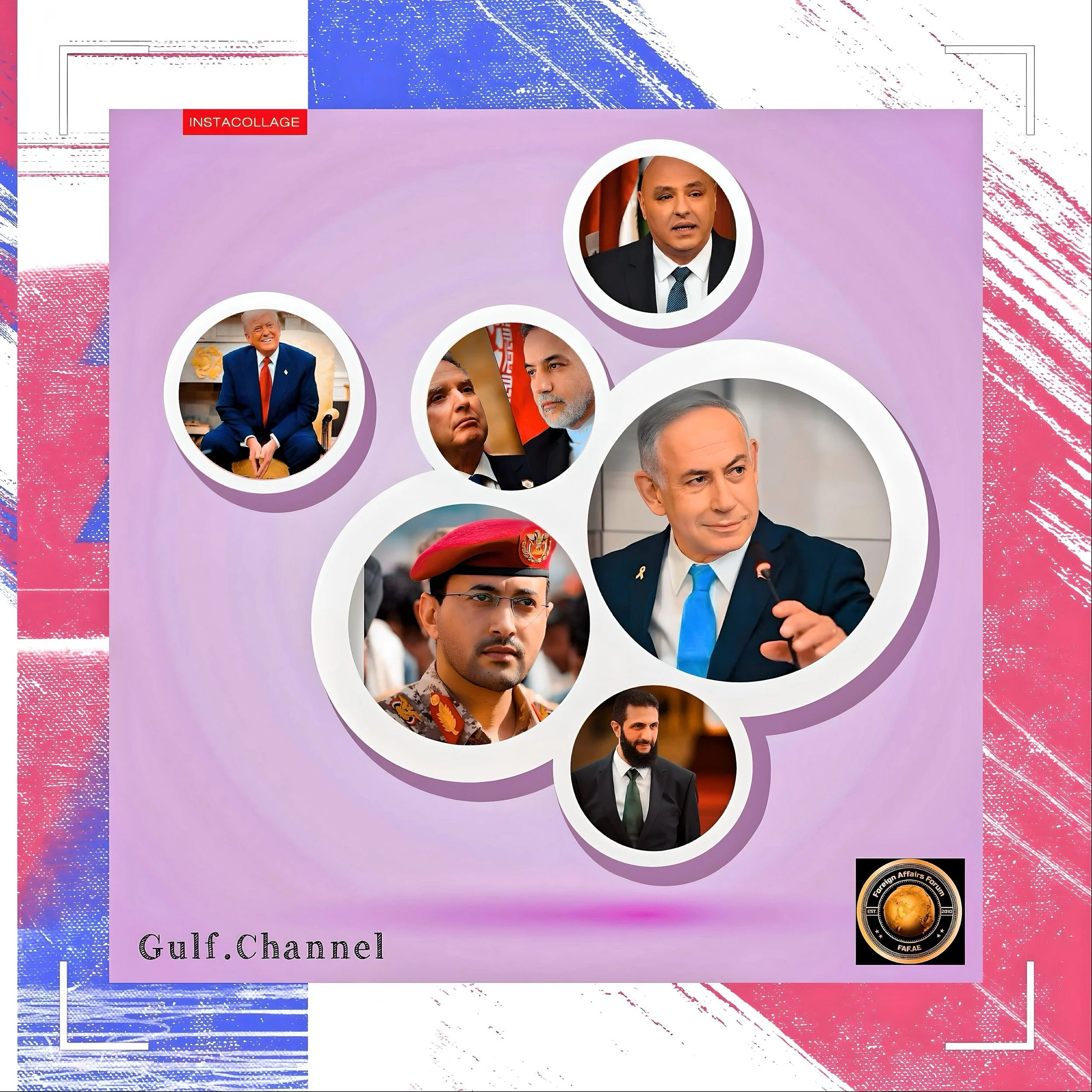Israel’s Territorial Actions and US Relations: An Analysis of Regional Dynamics
Introduction
Recent developments in the Middle East reveal a complex pattern of Israeli territorial control, expansion, and military operations across multiple fronts, with significant implications for regional stability and international relations.
FAF examines Israel’s recent actions in the Palestinian territories and neighboring countries, analyzes its relationship with the United States, and explores the legal and geopolitical dimensions of these developments.
Current Territorial Actions in Palestinian Areas
Israel’s activities in the Palestinian territories continue to expand despite international criticism. In February 2025, Israel announced plans for 974 new housing units at the Efrat settlement near Jerusalem, increasing the settlement’s population by approximately 40% and further restricting the development of neighboring Bethlehem.
This expansion is part of a broader pattern of settlement growth in the West Bank that has been ongoing since Israel’s occupation began following the 1967 Six-Day War.
While global attention has focused primarily on the Gaza conflict, Israel has simultaneously intensified operations in the West Bank.
According to Al Jazeera’s analysis, Israeli military forces have razed entire residential areas in the northern West Bank, resulting in the forced displacement of at least 40,000 Palestinians.
For the first time since the second Intifada, Israel has reintroduced tank incursions and air attacks into the West Bank, representing a significant escalation in military tactics.
The situation in Gaza has deteriorated dramatically following the collapse of a temporary ceasefire.
In March 2025, Israel launched a wave of airstrikes across Gaza that killed at least 404 people and wounded 562 others, according to the Palestinian Ministry of Health.
The Israeli government described these operations as “open-ended” and indicated they would expand with “increasing military force.”
Expansion Beyond Traditional Borders
Israel’s military presence has extended beyond the Palestinian territories into neighboring countries. The New York Times documented a growing network of Israeli outposts and fortifications in Syria and Lebanon as of March 2025.
In Syria, Israel has established a significant military buildup in the demilitarized buffer zone created after the 1973 Arab-Israeli war, including watchtowers, prefabricated housing modules, roads, and communication infrastructure.
Local Syrian residents reported that these installations appear designed for long-term occupation rather than temporary security measures.
In Lebanon, Israeli forces have maintained positions in five locations in the southern part of the country, ostensibly to protect Israeli communities from attacks.
While Israel initially pledged to withdraw as part of a November ceasefire agreement, these deadlines have been extended amid ongoing negotiations.
The US-Israel Relationship
The relationship between Israel and the United States remains central to understanding Israel’s regional position. Through February 2022, the US provided Israel with approximately $150 billion in cumulative aid, making Israel the largest recipient of US foreign assistance.
Current arrangements include at least $3.8 billion in annual military aid. Beyond financial support, the US offers crucial diplomatic protection, having used its UN Security Council veto power 42 times to block resolutions condemning Israel.
This relationship has remained strong across administrations. During recent Gaza escalations, US officials reaffirmed unwavering support for Israel diplomatically, financially, and militarily.
The White House Press Secretary confirmed in March 2025 that Israel had consulted the Trump administration before its renewed attacks on Gaza.
Some analysts characterize Israel as functioning as what they term a “watchdog” for US interests in the Middle East.
The Socialist Worker referenced a 1951 statement from the Israeli newspaper Haaretz that described Israel’s role: “Strengthening Israel helps Western powers maintain stability in the Middle East.
Israel is to become the watchdog… Israel could be relied upon to punish one or several neighboring states whose discourtesy to the West went beyond the permissible bounds”.
President Biden has been quoted as saying, “If there were not an Israel, we would have to invent one to make sure our interests were preserved.”
Legal and International Perspectives
Israel’s territorial control and military operations face significant international legal challenges.
In 2024, the International Court of Justice (ICJ) issued an advisory opinion declaring Israel’s occupation illegal and calling for Israel to end its “unlawful presence as rapidly as possible” and to make reparations to the people of the occupied territories.
This ruling reinforced earlier positions taken by the UN General Assembly and Security Council that Israel is an occupying power.
A detailed study on the legality of Israeli occupation identified two grounds in international law that may render a belligerent occupation illegal: when it follows from a prohibited use of force amounting to aggression (illicit initio ab) or when it follows from permitted self-defense but is subsequently carried out in breach of international humanitarian law and peremptory norms.
Israel’s actions have generated criticism from various quarters. UN special rapporteur Richard Falk has called Israel’s occupation “an affront to international law.”
Jewish writer and neuroscientist Yoav Litvin described Israel’s actions in Gaza and the West Bank as “genocidal expansion” occurring with Western support.
However, it’s important to note that successive Israeli governments have rejected such characterizations, preferring the term “disputed territories” for the West Bank.
Regional Implications
The expansion of Israeli military presence into Syria and Lebanon raises concerns about regional stability.
The establishment of apparently permanent installations suggests Israel may be prepared to maintain an indefinite presence in these territories.
This occurs against the backdrop of ongoing tensions with Hezbollah in Lebanon and efforts to counter Iranian influence in Syria.
While the search results don’t provide specific evidence regarding actions targeting Jordan and Egypt, they do indicate a pattern of Israeli territorial expansion and border security operations that affect regional dynamics.
The recent Houthi attack aimed at Israel that allegedly struck Saudi soil further demonstrates how Israel’s conflicts can spill over into the broader region.
Conclusion
Israel’s territorial actions in Palestinian areas and neighboring countries represent a significant expansion of its military footprint in the region, enabled in large part by consistent US diplomatic, financial, and military support.
These developments occur against a backdrop of international legal rulings that question the legitimacy of Israel’s occupation and settlements.
The situation presents a profound challenge to regional stability and international law. With Israel’s operations in Gaza intensifying and its military presence extending into Syria and Lebanon, the potential for further regional destabilization remains high.
The continued support of the United States provides Israel with the resources and diplomatic cover to maintain these policies despite international criticism.
As these dynamics continue to evolve, they will likely shape the future of Middle Eastern geopolitics, US foreign policy in the region, and global debates about sovereignty, self-determination, and the application of international humanitarian law in protracted conflicts.






